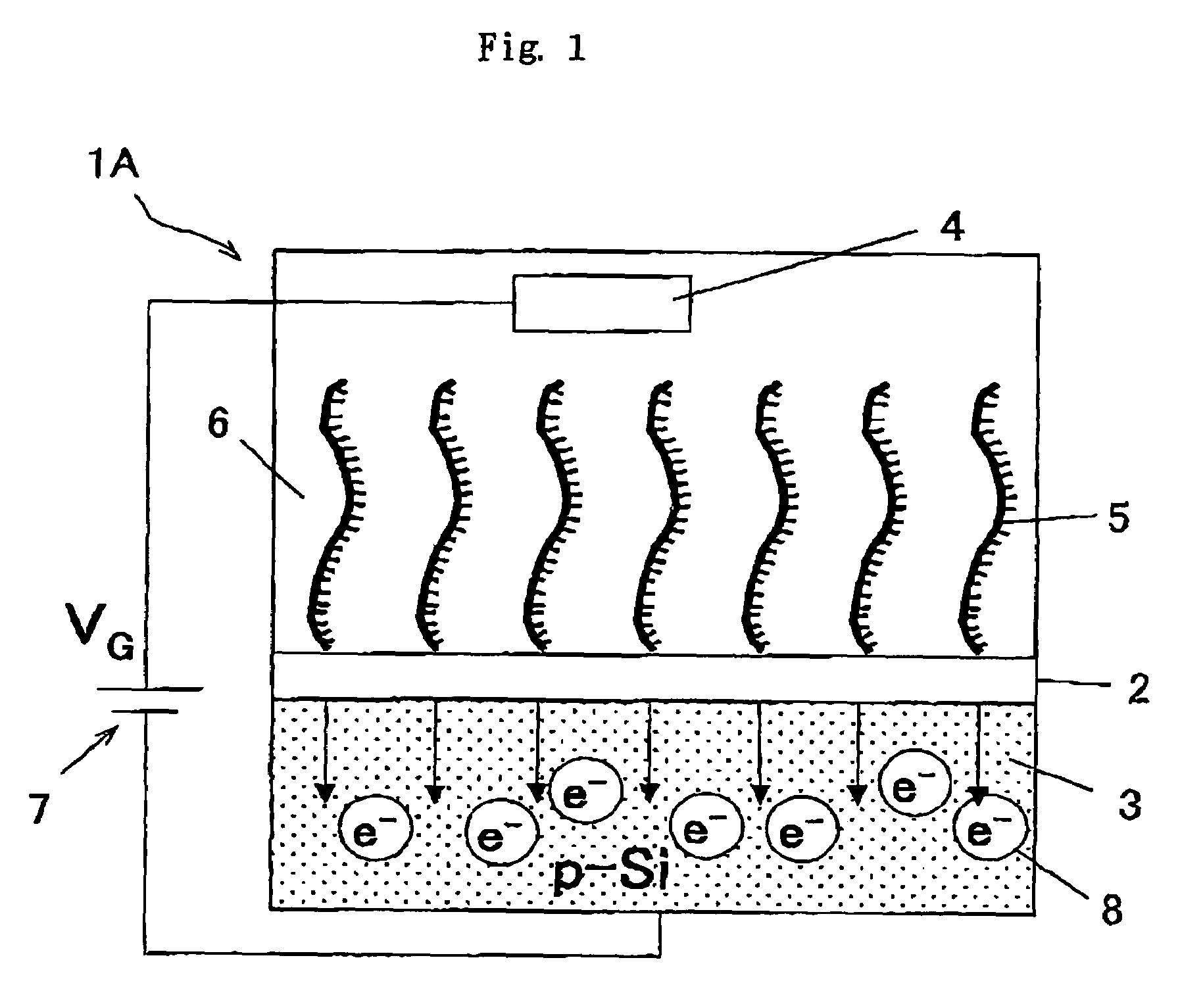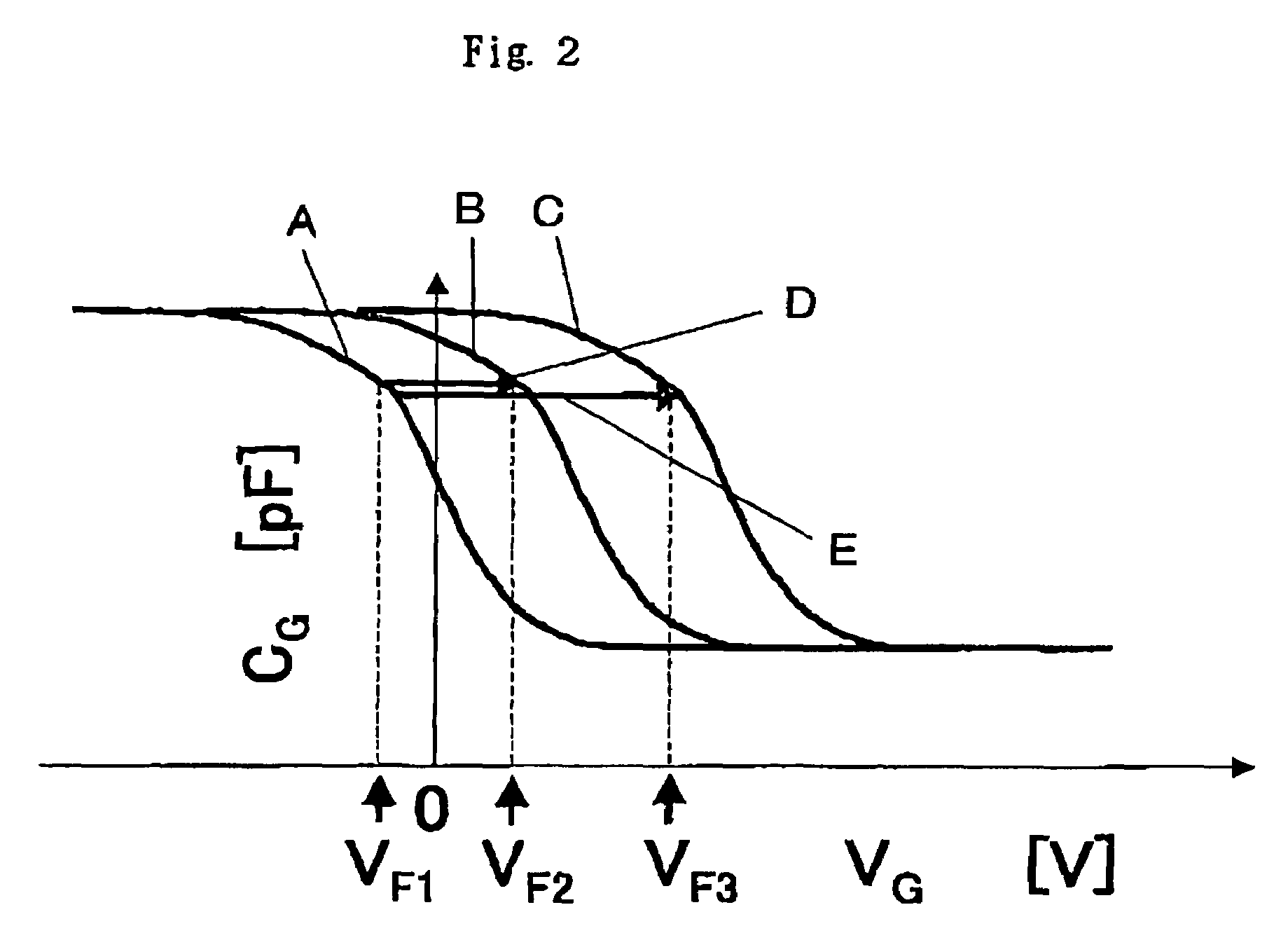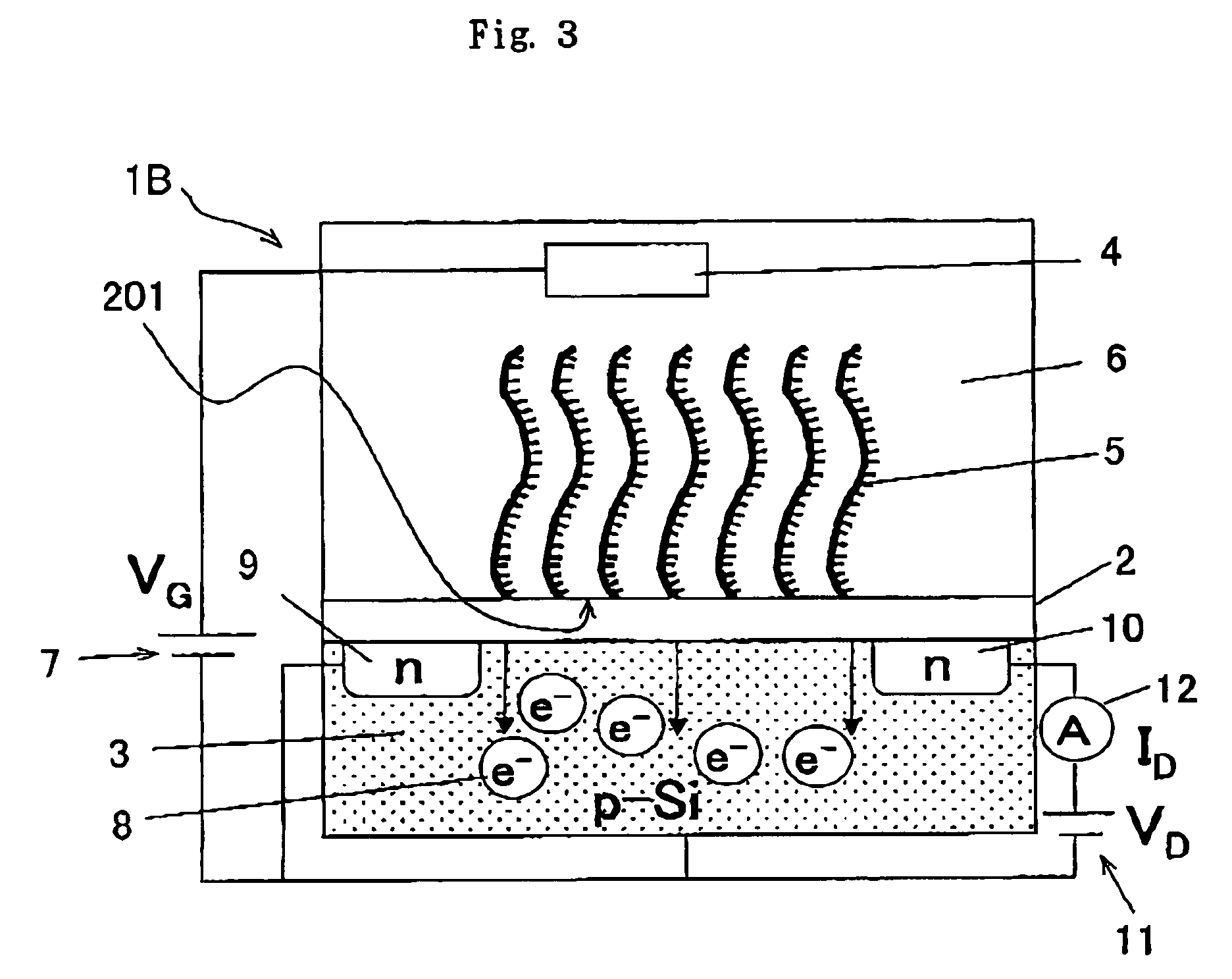Gene detection field-effect device and method of analyzing gene polymorphism therewith
a gene polymorphism and field-effect technology, applied in the field of gene detection field-effect devices and methods of analyzing gene polymorphism therewith, can solve the problems of large system size and cost, affecting the accuracy of gene polymorphism analysis, and requiring laser or complex optical systems, etc., to achieve the effect of high degree of sensitivity, reduced size and cost of gene polymorphism analysis, and high degree of accuracy
- Summary
- Abstract
- Description
- Claims
- Application Information
AI Technical Summary
Benefits of technology
Problems solved by technology
Method used
Image
Examples
example
Example 1
Detection and Analysis of SNP in Factor VII Gene
[0161]The Factor VII gene as one of blood coagulation genes includes a plurality of single nucleotide polymorphisms (SNP) existing therein. It is known that the wild-type (normal) of one of the SNPs at a position −122 is thymine (T) and the mutant-type thereto is cytosine (C). In order to detect the SNP at the portion −122 of the Factor VII gene, two types of nucleic acid probes formed of 11 bases, which correspond to the wild-type and the mutant-type, respectively were synthesized. The base sequences thereof were as follows, in which a sequence number 1 designates a wild-type nucleic acid probe and a sequence number 2 designates a mutant-type nucleic acid probe.
Wild-type nucleic acid probe: 5′-CGTCCTCTGAA-3′ (sequence No. 1)
Mutant-type nucleic acid probe: 5′-CGTCCTCTGAG-3′ (sequence No. 2)
[0162]In this example, the nucleic acid probes were synthesized so that the base of the SNP portion corresponds to a 3′ terminal end of the...
example 2
When Peptide Nucleotide Acid, PNA was Used in Detection of SNP in Factor VII Gene
[0170]In the example 1 shown above, the double strand nucleus acid with higher stability can be formed by using Peptide Nucleotide Acid, PNA as the nucleic acid probe to be immobilized to the gate insulation film area of the gene detection field-effect transistor.
[0171]Therefore, in this example, Peptide Nucleotide Acid (PNA) was used as the nucleic acid probe although the basic characteristics are substantially the same as the example 1.
[0172]Consequently, in the case of the sample containing the wild-type homozygote, the output of the transistor in which the wild-type PNA probe was immobilized was changed by 23 mV, while the output of the transistor in which the mutant-type PNA probe was immobilized was changed by 4 mV. In the case of the sample containing the wild-type and mutant-type heterozygote, the output of the gene detection field-effect transistors in which the wild-type and mutant-type PNA pr...
example 3
SNP Detection of Alcohol Dehydrogenase Related Gene
[0178]It is known that there exists the single nucleotide polymorphism (SNP) in the alcohol dehydrogenase related gene. The nucleic acid probe is designed so that the SNP portion corresponds to the base at the 3′ terminal end. The base at the SNP portion is thymine (T) in the wild-type and cytosine (C) in the mutant-type, and the base sequences of the nucleic acid probes corresponding thereto are shown below. The wild-type nucleic acid probe in this example is shown by the sequence No. 3, and the mutant-type nucleic acid probe is shown by the sequence No. 4.[0179]The wild-type nucleic acid probe: 5′-CATACACTA-3′ (sequence No. 3)[0180]The mutant-type nucleic acid probe: 5′-CATACACTG-3′ (sequence No. 4)
[0181]In this example, the basic configuration and the procedure of experiment are the same as in the example 1 and the example 2.
[0182]In this example, for example, as shown in FIG. 7 described above, the gene detection field-effect tr...
PUM
| Property | Measurement | Unit |
|---|---|---|
| frequency | aaaaa | aaaaa |
| voltage | aaaaa | aaaaa |
| temperature | aaaaa | aaaaa |
Abstract
Description
Claims
Application Information
 Login to View More
Login to View More - R&D
- Intellectual Property
- Life Sciences
- Materials
- Tech Scout
- Unparalleled Data Quality
- Higher Quality Content
- 60% Fewer Hallucinations
Browse by: Latest US Patents, China's latest patents, Technical Efficacy Thesaurus, Application Domain, Technology Topic, Popular Technical Reports.
© 2025 PatSnap. All rights reserved.Legal|Privacy policy|Modern Slavery Act Transparency Statement|Sitemap|About US| Contact US: help@patsnap.com



